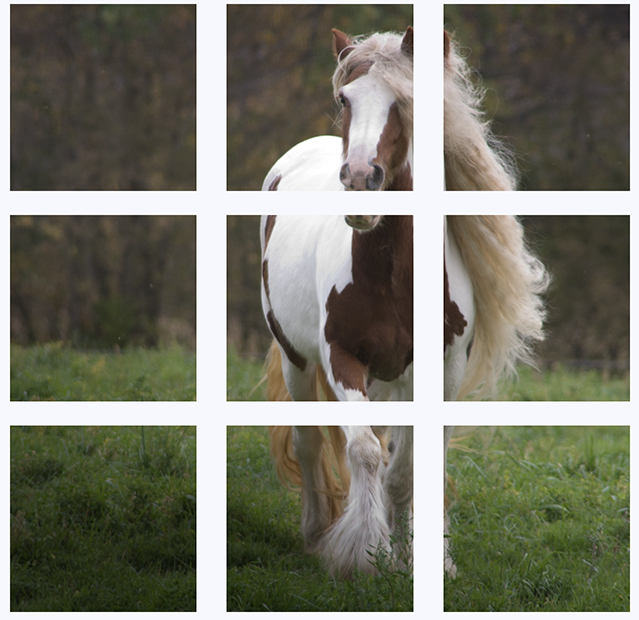Printing Large Image on Multiple Pages.
I’ve been using Photoshop for over 20 years now. I’m not a Photoshop wizard by any stretch, but I know enough to get what I need—and I use it all the time in my photo encaustic work.
That said, Photoshop is big. It’s expensive, has a steep learning curve, and honestly… it’s not for everyone.
Because I work large, I rely on it for one essential task: splitting my images so I can print multiple tissue paper panels and tile them together on a big substrate. I simply couldn’t work at scale without that capability.
But here’s the thing—technology changes constantly. Some updates are exciting, others make me want to pull my hair out. I’ve re-recorded my “how to split images” videos more times than I can count, only to find the method outdated a few months later. (By the time you read this, this post might already be obsolete!)
If Photoshop isn’t your thing, the good news is there are plenty of alternatives. Some are simple, some are more advanced—but all can help you split and print your images effectively. Here are a few that came up most often in my research:
-
Photoshop Elements – A lighter, more affordable version of Photoshop. Great for beginners.
-
Affinity Photo – A strong Photoshop replacement with lots of features but a smaller price tag.
-
Rapid Resizer – Upload your image, enter your desired size, and it automatically tiles your image for printing.
-
The Rasterbator – (Yes, that’s really its name!) Originally made for creating giant posters, it splits your image into multiple printable PDFs.
-
GIMP – Free and open-source, with many of Photoshop’s tools—including the ability to split images into tiles.
-
Qimage Ultimate – A professional-grade photo printing program designed to maintain high resolution across multiple panels.
-
Tile Image Splitter – A straightforward online tool focused solely on splitting images into tiles.
-
Microsoft Excel or Adobe Reader – Believe it or not, these can also be used to print large images across multiple pages. For a tutorial of this process go here>>
There’s no single “right” tool—it depends on your needs, comfort level, and how much control you want.
If you just need a quick, low-tech solution, start with Excel or Adobe Reader—they’ll split the image automatically when you print.
If you want to print each tile individually, try Rasterbator, Tile Image Splitter, or Rapid Resizer.
If maintaining image quality is most important to you, Qimage is a great investment.
And if you want full creative control—to decide where your image splits or to make other edits along the way—then Photoshop, Affinity, or GIMP will give you that flexibility.
Let me know in the comments below what has been your experience with splitting images to print on multiple pages.
Be well….be creative,
Clare
Click to learn more about photo encaustic classes, courses, and workshops.

Thank you for “digging deep” on tiling, Clare! I plan to continue experimenting— ultimately I think I’ll need something that allows me to decide where the split should go!
Happy New Year!!
Kathryn
Absolutely agree. That’s why I use photoshop. I’m too much of a control freak and want to control where to split the image.
Hi Clare,
First of all, for full disclosure, I don’t use Photoshop. I refuse to pay over and over and over for software, so my option has been with Corel (Aftershot Pro 3, Paintshop Pro Ultimate.) I am sure you know about Corel’s extremely poor documentation and sometimes convoluted approaches. That said, I have been using Corel for a couple of decades and have found it to be pretty much an equivalent to Photoshop. (I used Photoshop at work before retirement. I wasn’t impressed then or since because of the behemoth program more suited to desktop publishing than photography.)
I am looking for standalone software for image splitting/tiling. I absolutely don’t want web based software. It isn’t that I don’t trust people or companies; but I just don’t. Hacked once and well, rebuilding ID and credit etc. is a nightmare.
My images once downloaded from the camera (Canon 5D Mk IV) are RAW processed then exported to the photoeditor where they are automatically converted from 72 to 300 DPI. I am using Canon ProGraf 1000 for printing. (Love the printer; hate the cost of ink.) I do my own archival quality mounting and framing when done. I could sub it out, but enjoy the process from concept to realization on the wall.
I want to split the edited and print ready photo, then send the product back to Paintshop for final sizing. Clearly, you can see I am not playing with Instagram. I sell my work and get $$$ for it. My clients are upscale and critical so second rate wont work. I need a suggestion for software.
Paintshop does have a splitting function with HTML output. Not what I want.
HELP!!!
In my opinion Photoshop is the best software for what you want to do, but you’ve already ruled that out. I’m sorry I don’t have any other suggestions.